How to Do the Preacher Curl to Blow Up Your Biceps

If you really want to give your biceps a run for their money, look no further than the preacher curl. In fact, few exercises target the biceps as directly and effectively.
Unlike a standard biceps curl and its many variations, preacher curls force you to rely solely on the strength of your biceps to curl the weight. This is because the preacher curl bench prevents you from using any momentum to complete the rep. “This move allows you to take the stability factor out of the exercise, which concentrates almost all of the force on the biceps,” says Cody Braun, CSCS.
Since the preacher curl limits your ability to use momentum (or your shoulders) to help you curl the weight, you may find you can’t lift as much as you can with other biceps curl variations, like the classic standing dumbbell curl. And that’s okay! What matters is that you’re able to engage your biceps with each and every rep — ultimately making them bigger and stronger.
Here’s how to do a preacher curl properly, and some other helpful tips about this move and the muscles it works.
Preacher Curl: Step-by-Step Instructions
Appears in: Sagi’s BOD exclusives >> Bis and Tris
- Position yourself on a preacher curl bench with your triceps resting on the pad and your elbows bent holding an EZ bar with both hands using an underhand grip.
- Lower the bar, stopping just before your elbows lock out.
- Curl the bar back up to the starting position, and repeat.
Preacher Curl Variations
One of the most common preacher curl variations is the EZ bar preacher curl, as demonstrated in the video clip above. The EZ curl bar is a W-shaped barbell, usually weighing about 20 pounds, that allows for a more natural movement pattern without putting added stress on the elbow joint, Braun says.
If you don’t have an EZ curl bar on hand, there are other slight variations you can try in your workouts:
1. Dumbbell preacher curl
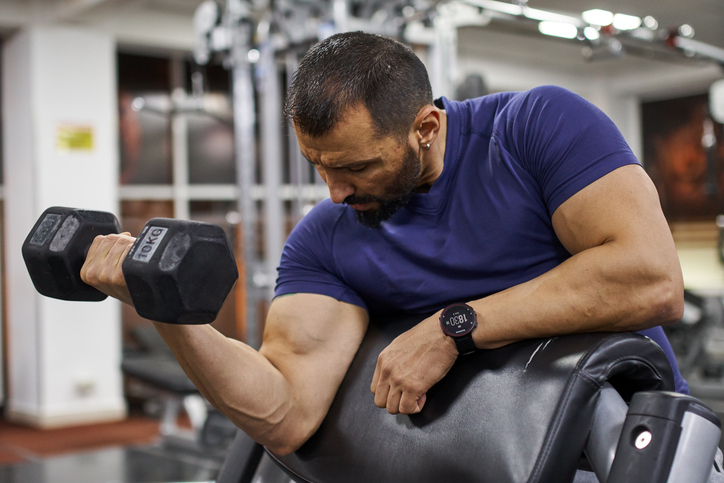
You can easily use dumbbells instead of an EZ bar to perform this move. An added benefit of using dumbbells is that you can work one arm at a time, which is especially helpful if you’re trying to correct a muscle imbalance or want to increase your mind-muscle connection.
2. Machine preacher curl
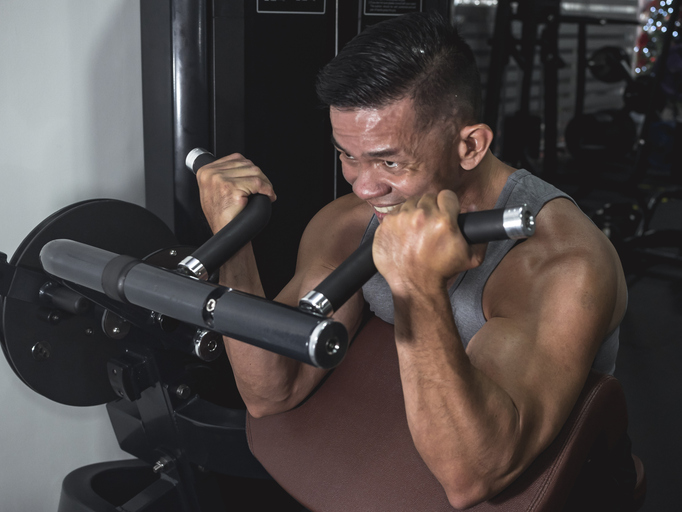
If you have access to a gym, you’ll often find preacher curl machines that combine the bench, bar, and weights all into one. These make it easy to adjust the amount of resistance and, like the dumbbell preacher curl, allow you to work one side at a time.
3. Straight bar preacher curl
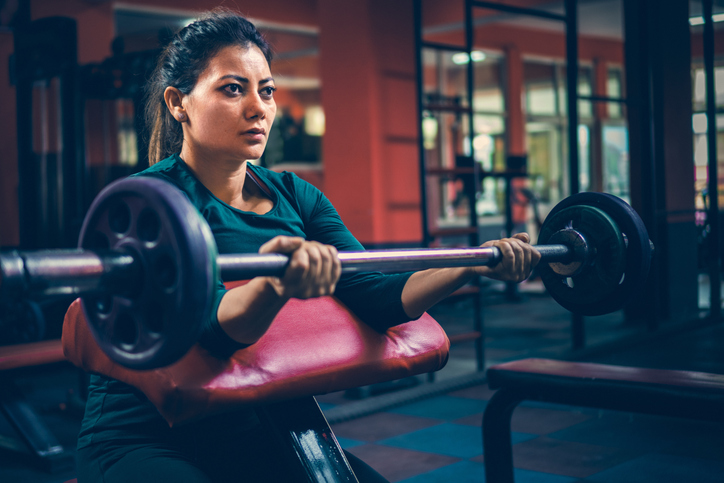
Provided it doesn’t put additional strain your wrist or elbows, you can also perform a preacher curl using a straight barbell.
4. Concentration curls
If your home gym can’t accommodate a preacher curl bench, you can perform a concentration curl as an alternative to isolate your biceps.
How to Make the Preacher Curl Easier or Harder
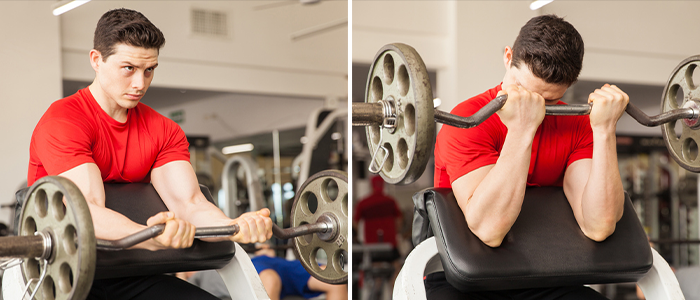
Make it easier:
- Use a lighter weight.
Make it harder:
- Use a heavier weight
- Slow your lifting tempo.
Bonus tips for doing the preacher curl:
- Always work your muscles through the full range of motion, Braun says. Do this by making sure to fully lower the weights, but stopping just before elbow lock-out.
- Keep in mind that the preacher curl can place a lot of stress on the elbow joints and biceps if you’re not used to the movement, so go lighter on the weights in the beginning to avoid injury.
The Benefits of the Preacher Curl
Since the preacher curl really hones in on the biceps muscle, it’s excellent for increasing strength and size. And since the move concentrates on one motion, you can really focus on doing it with correct form.
Why should you bother with training biceps? Only because you use them every single day! Anytime you pick something up — like grocery bags, moving boxes, or babies — you’re engaging your biceps. And if you work to make them stronger, then it will make these daily tasks much easier and more efficient.
What Muscles Do Preacher Curls Work?
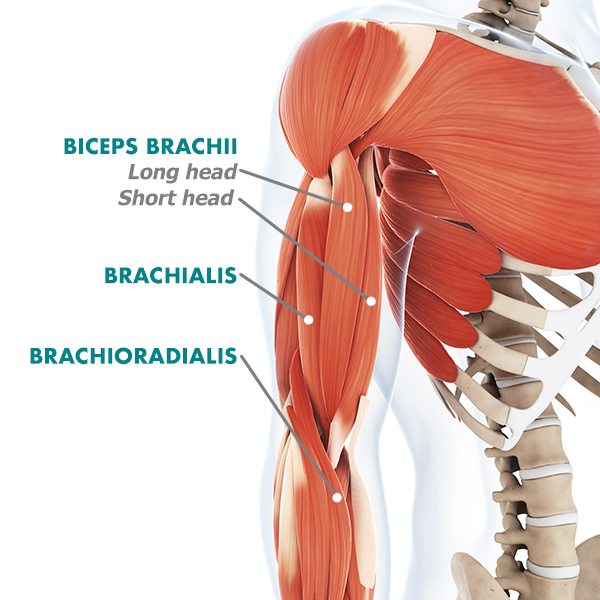
The preacher curl is classified as an isolation exercise, meaning it only involves one joint and one muscle: the biceps. But that doesn’t mean it’s the only muscle worked. The brachialis and brachioradialis (two other elbow flexors) also assist with the movement of the preacher curl exercise.
Your biceps muscles (biceps brachii to be specific) have two heads (short and long), both of which attach separately to the scapula, then fuse together to form the “belly” of the muscle. Then they attach via a tendon to the upper forearm. The biceps help you flex your elbow (bring your arm in, like for a biceps curl) and supinate your hand (turning it from a palm-down to a palm-up position).
The brachialis runs beneath your biceps brachii, and the brachioradialis runs from the bottom of your upper arm to the bottom of your forearm. The brachialis is located underneath the biceps brachii toward the outside of the upper arm, is actually the stronger flexor, due to its proximity to the elbow.
